The Kathmandu Valley Trek is a one-week low altitude trek that’s perfect for beginners or for people who want to trek without leaving the comforts of civilization behind. It’s offers beautiful views of the Himalayas without going more than a few hours from Kathmandu, making it perfect for those who are only in the country for a week. It’s even a great trek to do in the winter. I did it in January when most of the trekking routes are closed, and although cold, you won’t have to worry about snow blocking the way.
What I love most, is that you can customize this trek to be as short as a one-day hike or a three-day trek, etc. You can actually take a bus from any point in the trip back to Kathmandu (except Balthali). After packing for so many long-term treks, it seemed kind of weird to pack for a short low altitude trek. I actually loved how little I needed to carry. We did the trek in 11 days because we spent two extra days in Bhaktapur, one extra night in Nagarkot, and one extra night in Dhulikhel. Below, I’ve included the items we needed for winter, but you’ll need even less if you go during warmer months.
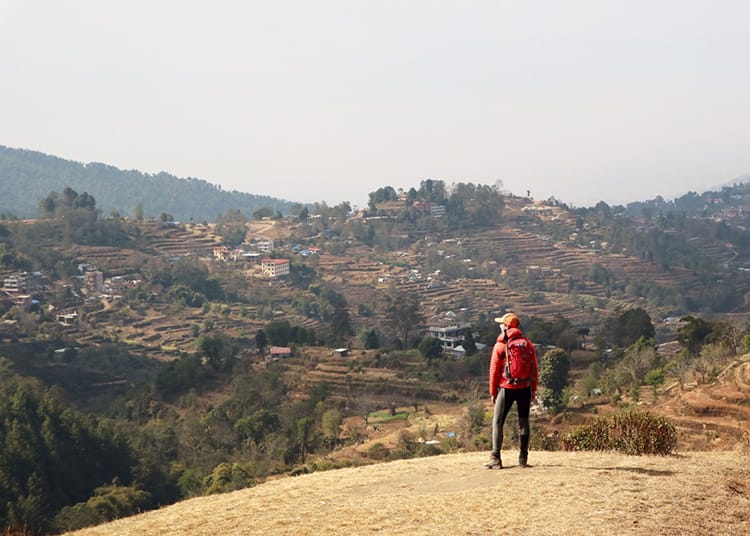
Brief Itinerary
Day 1 Kathmandu to Bhaktapur by bus
Day 2 Bhaktapur to Nagarkot
Day 3 Nagarkot to Dhulikhel
Day 4 Dhulikhel to Namo Buddha
Day 5 Namo Buddha to Balthali
Day 6 Balthali to Panauti
Day 7 Panauti to Kathmandu by bus
Read this post for a more in-depth Kathmandu Trek Itinerary
Bags & Storage
40L Backpack
I have the 40L Alchemist Bag from Eddie Bauer. It’s water resistant, has a tough outer shell that doesn’t rip easily, and is big enough to hold everything I need for a 4-12 day trek. I don’t recommend taking a bag over 55L because typically when you have more room, you fill it up with unnecessary stuff.
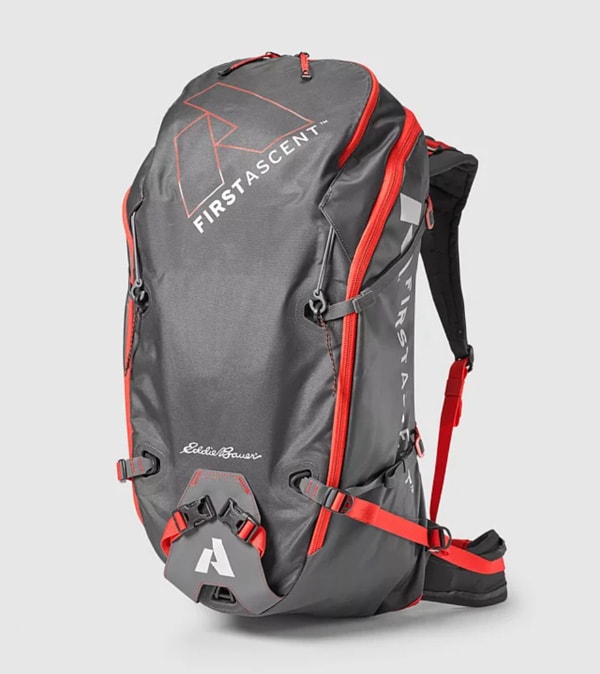
Mudder Waterproof Bags
I love having waterproof bags with me because you never know when it’s going to rain. Also, it keeps my bag organized. I keep my wallet in one, and all of my electronics in the other. If it starts to rain, I don’t have to freak out about anything because everything is already stored in waterproof bags.
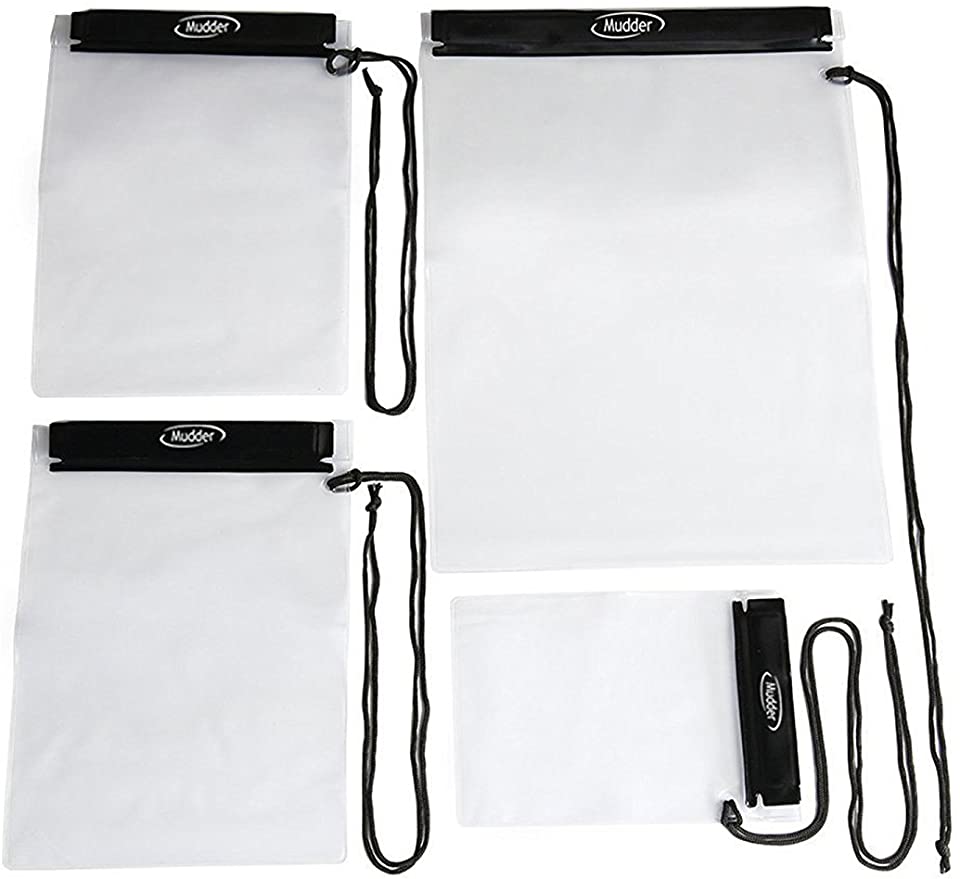
Packing Cubes
I’m a huge fan of packing cubes and can’t live without them. When trekking, you need to unpack and pack every day in a room without a dresser or table. Therefore, having everything in neat little cubes makes it easier. You just take out the cube you need rather than unpacking every single item in your bag.

Water Bottle
Waste removal in Nepal is very difficult for locals. Consider bringing a reusable water bottle to cut down on pollution. Even if you throw a plastic bottle in the garbage, it may not actually end up in the right place. It could end up in a river or thrown down a cliff out of sight.
Backpack Rain Cover
This is a must if your backpack isn’t waterproof. Many backpacks are water resistant but won’t stay dry in a downpour.
Plastic Bag for Laundry
Bring a plastic bag (like the kind you get your groceries in) for your laundry. That way your smelly socks don’t stink up the clean clothes. I also recommend putting a few fabric softener sheets in your luggage to keep it fresh.
Ziplock Bags
I carry a few of each size just to keep my bag organized. Toiletries go in one, snacks in another, etc.

Clothing & Accessories
This list might seem like a lot. We went in the winter, so we wore most of the clothing even when we were walking during the day. Most of the budget friendly hotels did not have heat (the luxury ones did), so having warm clothes to wear after the sun went down was important. I’m a huge fan of Eddie Bauer, so most of the items I recommend below are from them. They have great sales throughout the year, so I usually buy everything 50% off, and I’ve found the quality to be better than companies like North Face or Colombia which charge more.
Down Coat
At night and in the mornings, I needed a down coat. Mine is super compact and folds into a pocket so it didn’t take up much room and was a life saver. It’s probably one of the best investments I’ve made besides my trekking boots.
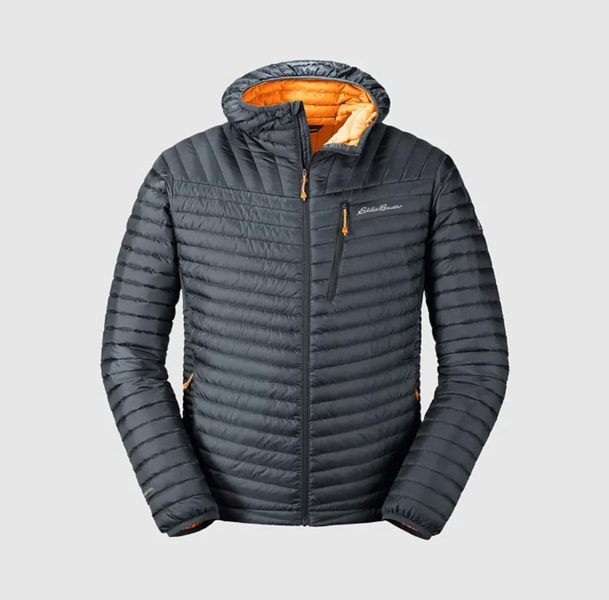
Fleece Jacket
No matter what time of year you trek, bring a fleece zip up. It gets chilly at night, and most places don’t have heat. I slept in my fleece on colder nights and wore it during the day when it was windy.
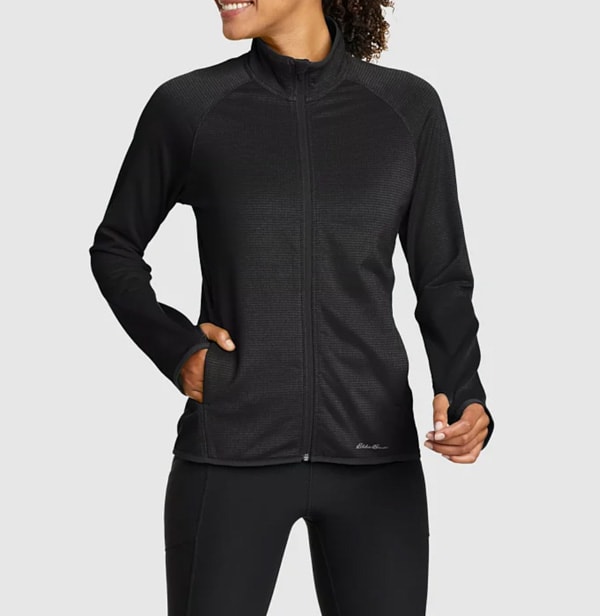
Raincoat / Poncho
You never know when it’s going to rain, so always have a raincoat or poncho with you. If it’s summer, you can get away with a poncho, but in the winter you’ll want a proper raincoat. I bought a knockoff raincoat in Kathmandu and the lining is super itchy and it always gets scrunched up funny. Anyway, I’ll be buying this raincoat when I get back home.
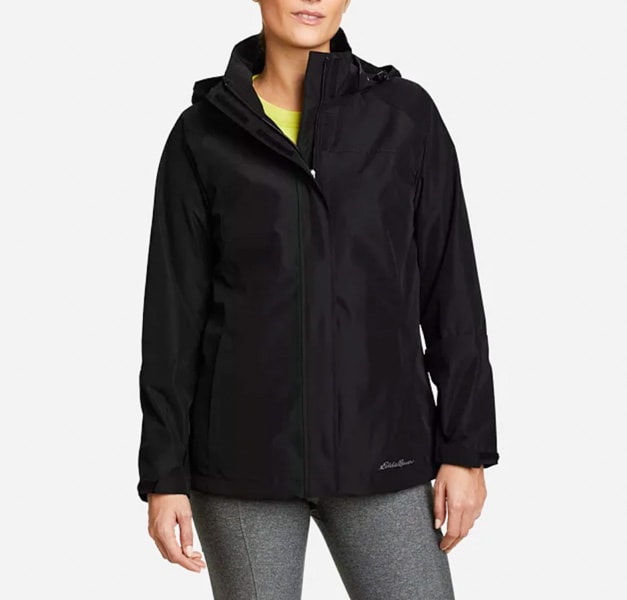
Quick Dry T-Shirt
I took one long sleeve shirt and one short sleeve t-shirt. If it’s summer, then you should take two short sleeve t-shirts instead since it will be hotter during the day.
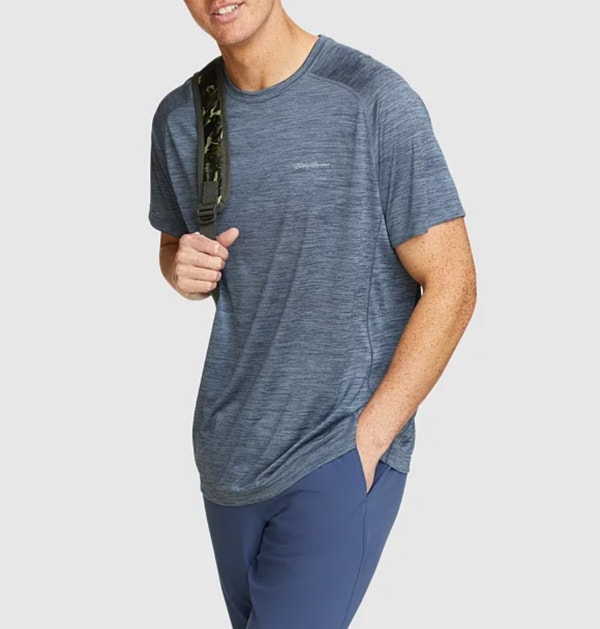
Quick Dry Long Sleeve Shirt
We went in the winter, so I took one long sleeve shirt and one short sleeve t-shirt. If it’s summer, then you should take two short sleeve t-shirts instead since it will be hotter during the day.
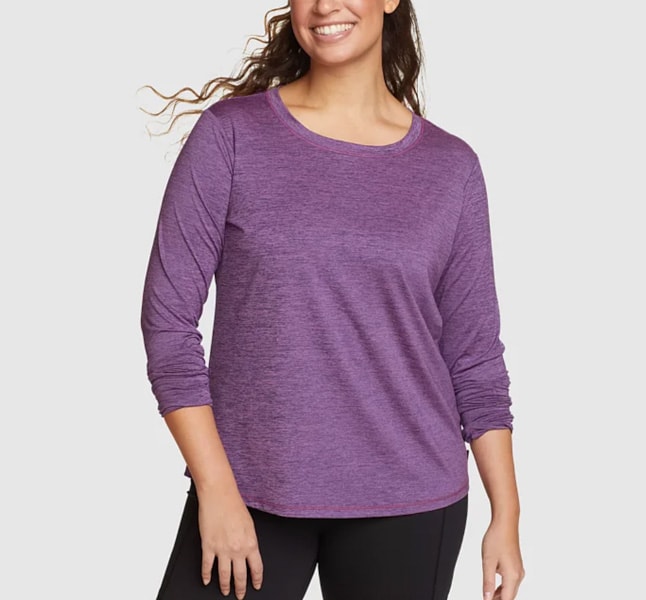
Lightweight Trekking Pants (2)
Two pairs of pants are ideal, that way you can wash one while you wear the other. I have these lightweight trekking trousers which are perfect for walking and are also stylish compared to most trekking pants. I also have a pair of long workout leggings.
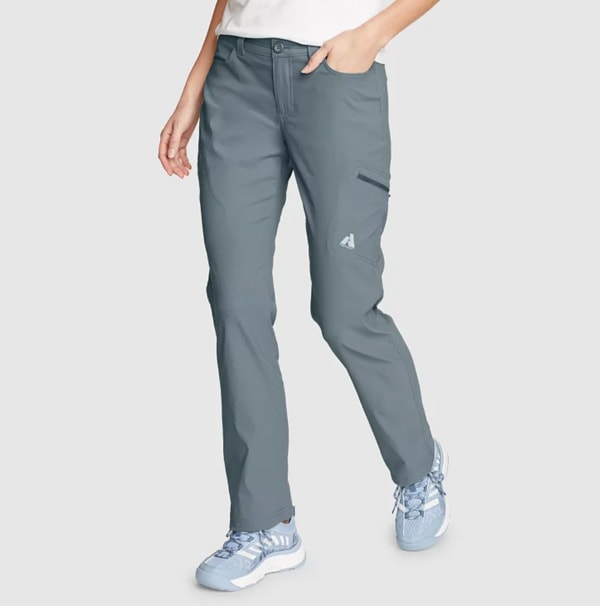
Thermals
Most of the hotels and lodges on this route are pretty nice. If you’re staying in places in the $30 range and up then you likely won’t need thermals. However, if you stay in cheaper places with no heat, you may want some to wear in the evenings if you go in the winter (Oct, Nov, Dec, Jan, Feb).
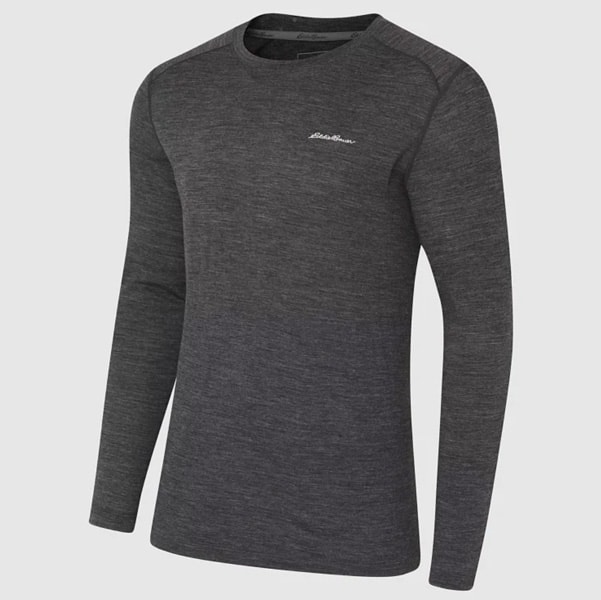
Buff / Scarf
Some roads or trails are dusty, so it’s best to have a small face mask or a buff.

Short Hiking Socks (2)
I brought two short hiking sock and one long hiking sock. One of the short socks was only used in the evenings in the lodges. In the summer, three short hiking socks would be fine as you will probably be too warm with the longer ones.
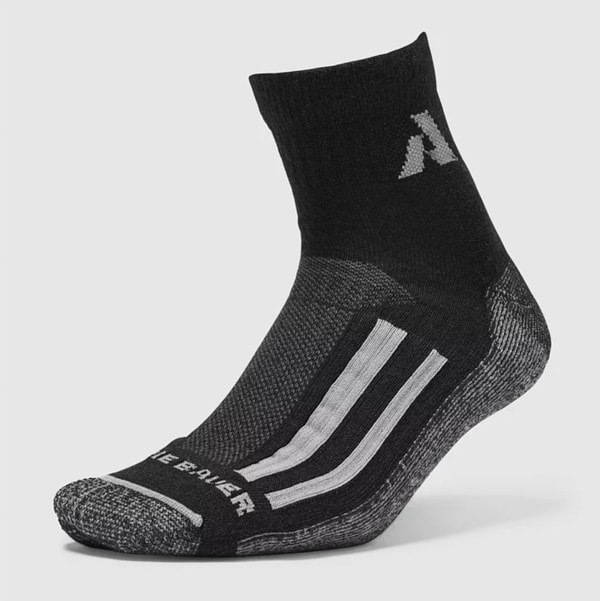
Hiking Boots
Having good hiking or trekking boots is the most important. Sometimes you’ll be walking on a paved road, and sometimes you’ll be on a rocky trail, so you need good support for your feet. I have these trekking boots because I trek a lot and know they will get really good use.
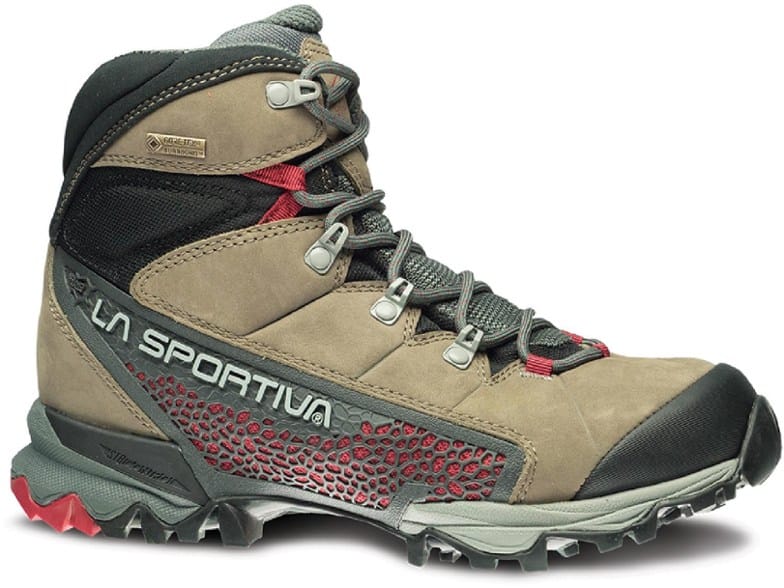
Hiking Sneakers
If you’re not ready to commit to $200 shoes (I certainly wasn’t on my first trek), just make sure the quality is good. I have these NORTIV 8 hiking boots which are great for hikers just starting out.
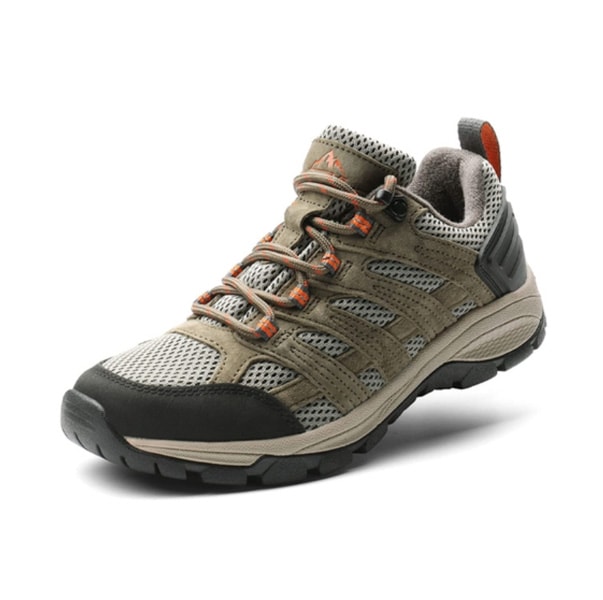
Flip Flops
I like to take my shoes off when I arrive to lodges, so light flip flops are great.
Summer Hat
I brought a baseball hat which was great during the day in the sun.
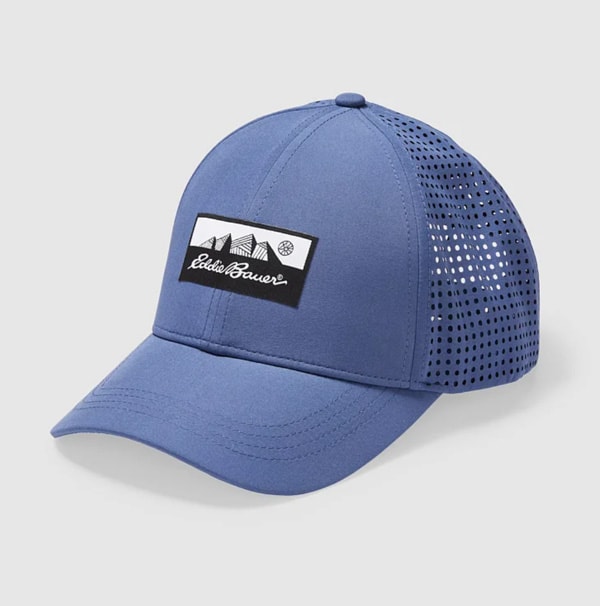
Winter Hat
I brought a winter hat which I slept in at night. I also wore it at dinner and early in the morning.
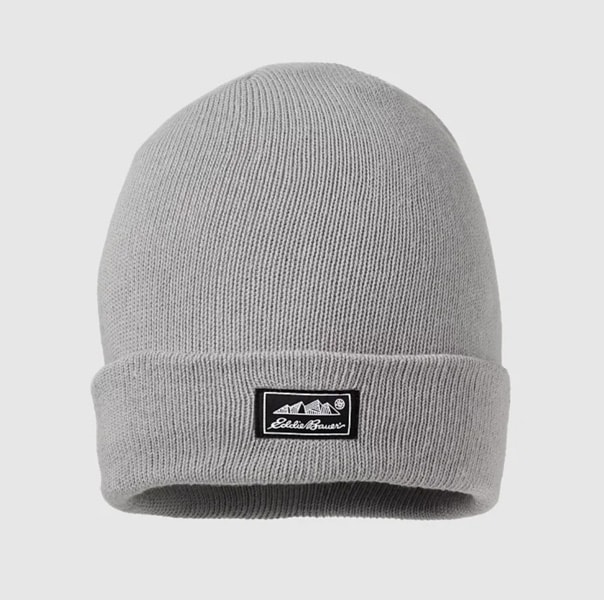
Sunglasses
Even if it looks like it will be cloudy, sunglasses help protect against the dust you’ll experience on a few parts of the trail. I used to buy super cheap glasses, but splurging for good polarized ones will help you, especially if you plan to trek at a higher altitude where there might be snow.
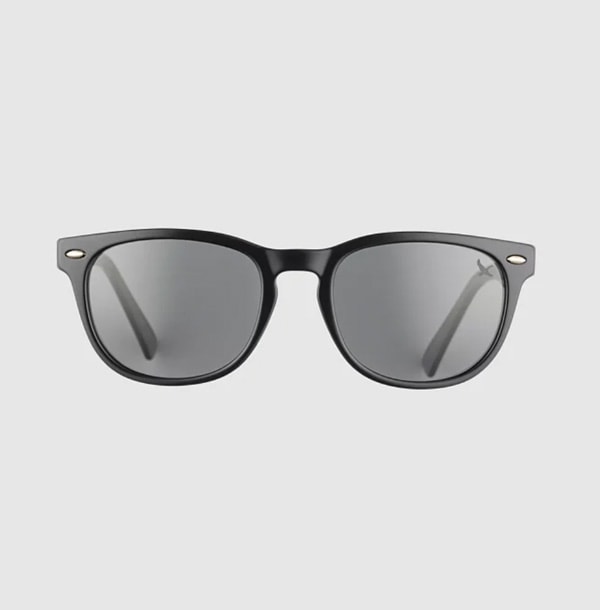
Gloves
Although most of the hotels along this route are pretty classy, they all take a while for water to get hot. Therefore, you’ll often find yourself washing your hands in icy water. In the winter, definitely bring a pair of thin gloves. That way you can warm up after washing your hands.
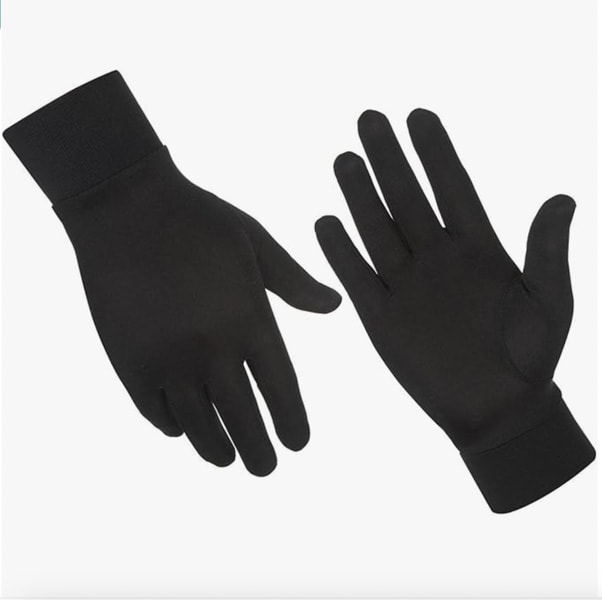
Pajamas
I brought one long sleeve sleep shirt, one pair of thermal pants and socks for sleeping. It was usually around 45 degrees Fahrenheit at night and 50 during the day, but without any heat in the room, the warm clothes felt necessary. Even in the spring and summer, most of these towns are located above 1,600 m (5,250 ft), so it will be a little cool when the sun sets.
Underwear
I brought five pairs of underwear. We did laundry in Bhaktapur and Dhulikhel and paid 200 rupees ($2.00 USD) each time.
Bras
I brought two sports bras. Again, we did laundry so I was able to wash each one once.
Toiletries
I tend to buy most of my toiletries in Kathmandu when I arrive since I don’t like carrying them on the plane. If you won’t have time to shop or want to have everything when you arrive, you can find everything on Amazon. I’ve included links within the article to make it easy to find everything you need.
Quick Dry Towel
A lot of the hotels have showers on this route. Some provide towels and some don’t so it’s good to have a microfiber towel with you just in case.
Bug Repellent
I like Badger Bug Balm which is a natural bug repellent. It’s a solid stick, so it won’t spill in your bag and it works very well!
Sun Protection
Bring sunscreen and lip balm with you. I recommend a lip balm with SPF protection.
Tooth Care
I like to bring a toothbrush, travel size tooth paste, and toothpick flossers.
Hand Sanitizer
You may find yourself using bathrooms along the hike. Often, they won’t have soap, so always have some hand sanitizer with you.
Deodorant
It’s hard to find western brands in Nepal and it’s unlikely you’ll find any on the trail.
Vaseline
We always carry a tiny vaseline with us. Trekking has an interesting way of chapping one’s lips and nostrils. On one trek, the combination of the strong sun and freezing cold winds left my nose looking like I had a severe burn for weeks. We apply vaseline multiple times a day to avoid this.
Toilet Paper / Tissues
Hotels will provide toilet paper, but lunch stops and tea stops along the way probably won’t. Have one or two packs of tissues on you in case of an emergency.
Feminine Hygiene
Bring a blossom cup, pads, or tampons if needed. It’s hard to find them on route unless you are in one of the bigger cities.
Hair Care
A lightweight comb and small individual packets of shampoo are great. When hiking, I go without conditioner, but bring some if you need it as that’s a lot harder to find on route. I recommend a solid conditioner and solid shampoo for traveling.
Laundry Detergent
Bringing a ziplock bag of detergent is good so you can do your laundry.
Hand Cream
You’ll wash your hand in cold water or use a lot of hand sanitizer. I find my hands are always extremely dry when I trek.
Nail Clipper
Pretty self explanatory, but make sure to get the kind with the little thing that cleans under your nails. Without a place to wash your hands properly, you’ll get a lot of dirt under there.
Fabric Softener Sheets
I brought fabric softener sheets from home. I put them in with my clean clothes and laundry to make sure everything stayed smelling fresh over during the trek. They definitely made a difference.
Other Toiletries
Consider bringing Q-tips (ear buds) because it gets super dusty in parts of the valley. I always bring some q-tips to get the crazy amount of dust out of my ears.
It’s hard to find other things like shaving razors, hand creams, or bars of soap in the smaller towns, so it’s best to bring any supplies with you.
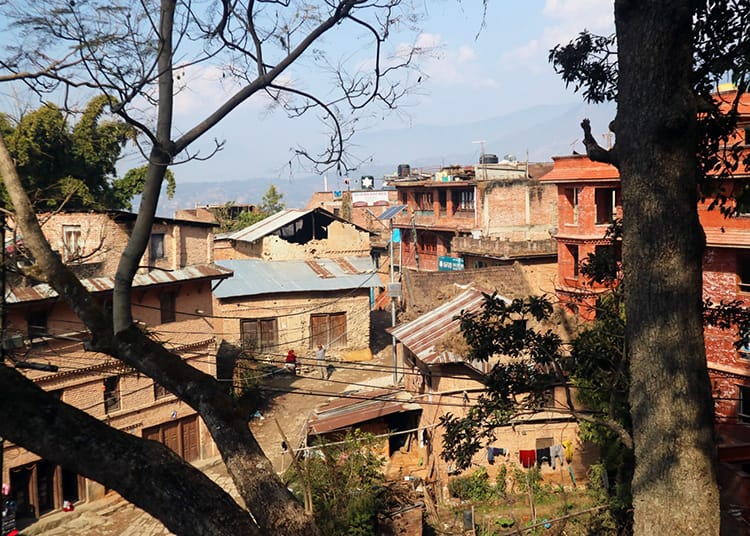
Medication & First Aid
Diarrhea Medicine
I’ve been told that 80% of tourists visiting Nepal get travelers diarrhea, so I always carry some medication with me in case I need it in a pinch.
Activated Charcoal
Activated charcoal is great for treating food poisoning. I always bring about 10 tablets with me. Talk to a doctor before you take this as it is strong enough to cancel out some prescription medications.
Electrolytes
Dehydration is common when hiking, so be sure to have some electrolytes. I like Nuun the best because they taste good. You can buy electrolytes in Nepal, but the taste is kind of gross.
Ankle / Knee Support
I have a bad knee and ankle so I used a brace for the downhill sections. This makes my life exponentially easier and helps manage the pain.
Basic First Aid
Bandaids, Neosporin, Asprin, and other basics are good to have.
Water Purification Tablets
It’s very difficult for villagers to get rid of garbage so please bring a water purifier instead of buying plastic bottles. It’s a lot cheaper to bring tablets than to buy water on the trail.
Vitamins/Medicine
I bring several immune boosting vitamins with me including vitamin d, vitamin c, olive leaf, zinc, probiotics, etc. I also bring a cold medicine and pain killer like Tylenol just in case.
Antibiotics
Always have an antibiotic with you in case you get food poisoning or dysentery. Ask your doctor when you should use it. These trails go through small villages and finding antibiotics on the trail may be difficult along some stretches.
Prescription Drugs
Have any prescriptions you need with you since doctors aren’t easy to come by.
Cold Medicine
The common cold can hit you anywhere. Have a few days’ worth of cold medicine with you. On every single trek I’ve been on, I’ve given at least one person cold medicine.
Throat Lozenges
Throat lozenges are a life saver, especially if it’s cold or if you get sick along the way.
Electronics & Entertainment
Camera & Charger
I took my Canon EOS M3 which is lightweight for a camera. I wish I had a better zoom though, so you may want to bring a DSLR.
Phone & Charger
There are spots where you can get service on the way and most hotels have Wifi
Travel Adapter
Most hotels have international outlets, but some don’t, so I carry a power adapter just in case.
SIM Card
I recommend getting an NCell SIM card since WiFi isn’t always the best outside of major cities.
Maps.me Downloaded
I highly recommend an offline map. There are areas where there is no WiFi, no cell coverage, and the trail doesn’t show up on Google maps. We asked locals as we went but there were times when it was super confusing and no locals were around. Maps.me seems to be the best offline map for this route that I know of.
Head Lamp
It’s good to have a headlamp in case the power goes out or for going to the bathroom at night. One room we stayed in had a light in the bathroom that was connected to a light in the main room, so every time you turned the light on at night the whole room lit up.
Kindle
Most of the time, you’ll arrive around 3:00 or 4:00pm which leaves you with a lot of free time before bed. I highly recommend having some reading material with you. I have a Kindle Paperwhite which I love!
Movie / Music Downloads
If books aren’t your thing, download a few movies to your phone prior to leaving. I found the WiFi connection along the trail to be average at best. Sometimes I couldn’t even load a Google search using data. So don’t count on browsing the web as your entertainment.
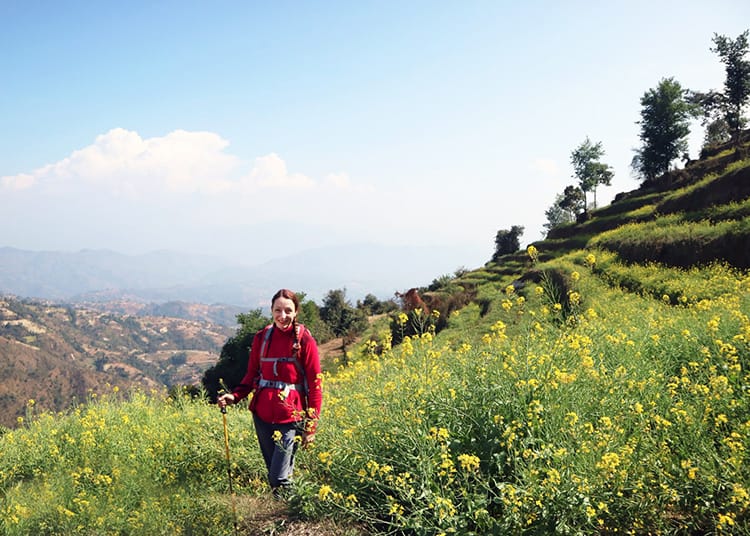
Miscellaneous
Trekking Poles
I don’t generally use trekking poles except on difficult treks. I decided just to bring one of my pair. I did use it going down some steep stairs and on one of the more difficult days. If you have a bad back or knees or are out of shape, I’d highly recommend these to make the trek a little easier. You can rent trekking poles in Kathmandu if you don’t want to purchase them.
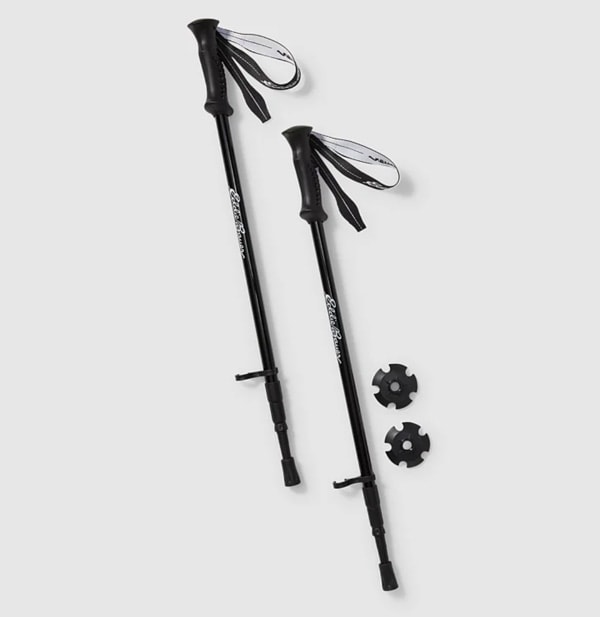
Money
It’s best to bring enough money for the entire trek. You can read my post on what to budget for the Kathmandu Valley Trek. There are a few ATMs along the route but we found that they weren’t very reliable.
Copy of Passport & Visa
You may be asked to see your passport by hotels, so it’s good to have at least one copy with you. I live in Kathmandu, so I don’t carry the actual passport. If you go to Bhaktapur, you’ll need to present the copy to get access to Durbar Square (which is a large part of Bhaktapur). If you have a copy of your visa and a passport photo, you can get a reusable pass that’s good for months (for the same price). Otherwise, the pass is only good for a week.
Trekking Insurance
I always have travel insurance, so I keep a copy of my paperwork with me at all time. That way, I know the numbers to call if I have an emergency and need assistance. It’s not really necessary on this trek because of the low altitude, but it doesn’t hurt to have it.
“Around Kathmandu Valley” Map
We found this useful while planning our route. When we got lost, we were able to ask where the next town was. For instance, if we didn’t want to follow the road, we would ask how to get to the next small town located on the map on the trekking trail to ensure we got directions along the route we wanted.
Playing Cards
Someone else will always have playing cards, but I recommend bringing a pack just in case. Learn a few games before you leave so you have some options to play when trekking. We had a hilarious time playing “Bullshit” with an entire teahouse. We also had an epic game of UNO going on one trek.
Duct Tape
This seems like a weird thing to recommend, but you never know when you’ll need it. Bring a small roll just in case. I once used it to keep a shoe from falling apart while walking back 5 hours after it busted open (a lesson in buying good quality shoes).
Shopping in Nepal
Planning to shop when you arrive? On my first trip to Nepal, I was backpacking for 9 months in Southeast and South Asia. I didn’t have room in my pack to carry a bunch of heavy winter clothes with me, so I ended up buying everything in Thamel (the tourist hub in Kathmandu). I arrived a few days early, so I had plenty of time to search for things. I learned quickly that I’d need to check multiple stores and negotiate a lot.
Recently, I was approached by Mount Ready to try out their new system. They make the experience a lot easier. You simply go to their website, pick your trek and they have a pre-arranged pack with everything in it. It’s the same stuff you buy in Thamel (including knock offs) but you don’t have to spend days running around and negotiating. The prices are fair and you can add or remove stuff from the pack. You show up at the store, and everything is picked out for you. All you have to do is try it on and pick the colors you like. It’s super simple.
Before recommending them, I wanted to test it out myself, so I had them put together a pack for the Annapurna Circuit. I removed a few things, changed some sizes and styles and checked the quality of the clothes. If you’re doing a trek once and don’t want to invest a lot of money, then this is the way to go. I started out with a lot of items from Thamel and slowly upgraded my pack with the Eddie Bauer products listed above.
You might also like…

Michelle Della Giovanna
Writer at Full Time Explorer
I’m just your average New Yorker who quit her job in the fashion industry to explore the world. Come find out what it’s like to trade in five-inch heels for squat toilets.
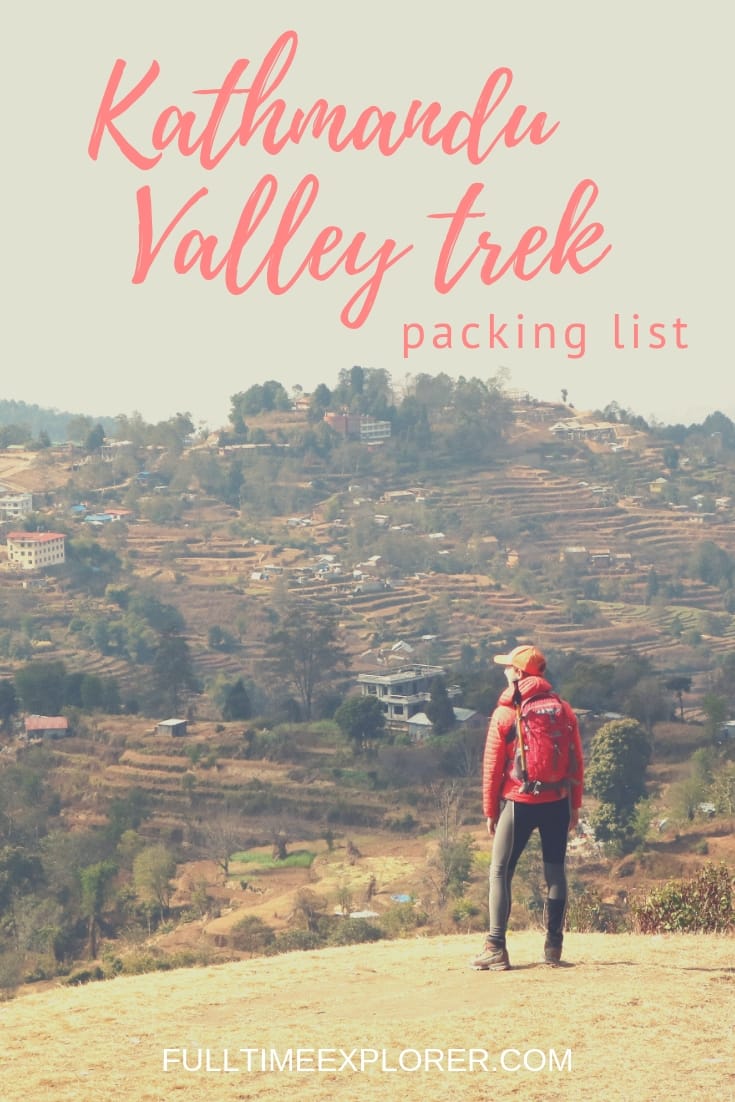

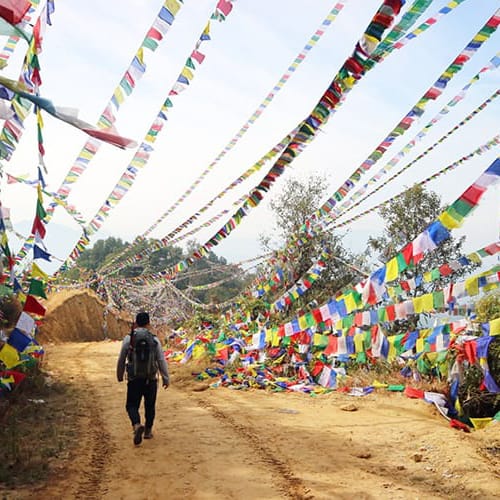
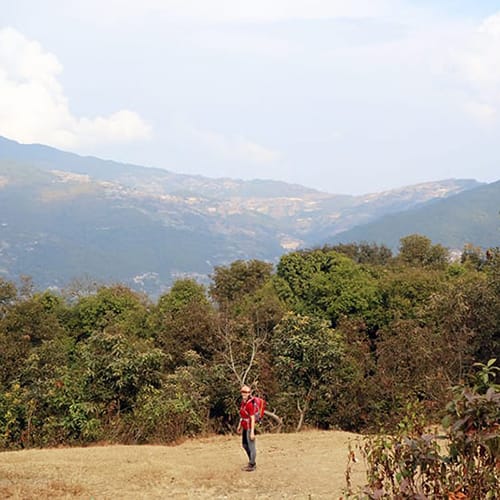
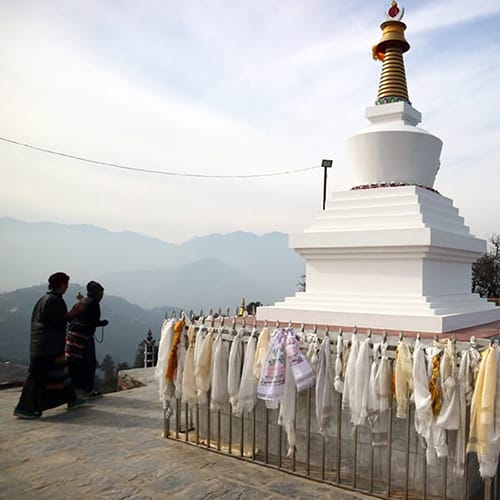
Hello Michelle,
First of all I would like to tell you that I just love your website! It is such a big help. Beautifully organized and categorized. Thank you so much! One just finds (nearly) everything.
You didn’t list a sleeping bag for the Kathmandu Valley although you went in Winter. That is surprising. Is it not necessary because you get enough blankets in the guest houses? I considered bringing one in April. But since it is really bulky, I would prefer not to. What do you say?
I would really appreciate an answer before I leave on April 2nd.
All the best
Angela
Hey Angela! Thanks so much for the kind words about my blog. We did not take a sleeping bag as we stayed in hotels and guesthouses that were about $20 a night and they provided proper blankets even in the winter. I don’t think you will need one in April as it’s pretty warm this time of year and even the cheaper hotels on this route provide good beds with blankets. The only time you might need a sleeping bag in Nepal is if you do a high altitude trek staying in teahouses in the winter ?